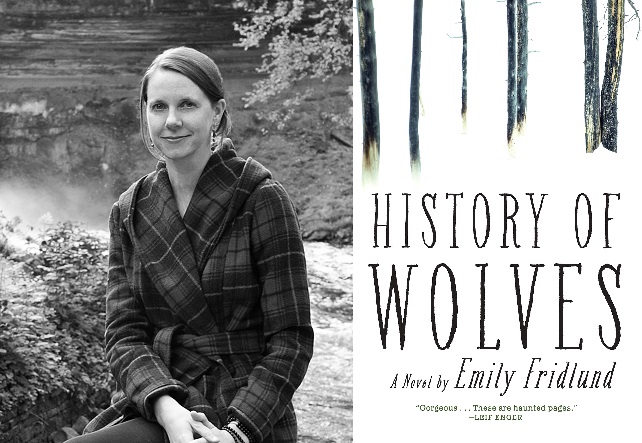Night Beast and Other Stories by Ruth Joffre
 Night Beast and Other Stories
Night Beast and Other Stories
By Ruth Joffre
Black Cat | May 8, 2018
If I had only one word to describe Ruth Joffre’s debut short story collection, Night Beast and Other Stories, I would choose “fluid.” In many ways this book resembles a river, always moving, constantly changing, but with steady force sufficient to grind stone into sand. Like water, these stories dance through—not around—their subject matter, seeping into every crack and crevice, making connections in one scene and dissolving them in the next.
Reading this collection feels like looking at the world through water—the angles don’t quite match what you expect and the light is diffuse, except when a ripple catches it and momentarily robs you of vision. Joffre’s characters are wispy and insubstantial in the way ghosts of past selves feel when we look back through the haze of time. If you turn your head or look away, they will shift into something else, something new. Something dangerous.
“Two Lies” reveals one possible dangerous shape when a mother imagines her children’s dirty rooms growing intelligent slime mold. “When summer arrives the children will have no reason to go outside and will hide in their room, feeding their new mold pet, giving it swaths and patches of their flesh for it to stretch out and grow spores.”
Slowly, fluidly, the children become the mold: “I will reach my hand out to stroke them, and in their strange unicellular way the slime molds will reach back, like flowers to the sun.”
Joffre achieves this fluidity by refusing labels, marrying concrete sensory details to emotions, and using elements of fabulism and magical realism. Taken together, the effect is dreamlike, but never serene. There are mouths full of teeth in these waters, and they are hungry.
In “Nitrate Nocturnes,” the first story in the collection, Fiona waits for the timer embedded in her wrist to count down to the day she meets her soulmate. In the meanwhile, Fiona dates both men and women. Never is a label applied to her sexuality. She isn’t “queer” or “bisexual” or “pansexual.” She simply is, and she dates who she likes while she alternately rails against the timer’s tyranny and waits on edge for the moment she meets her soulmate.
In stories when the main character is only involved with women, she is never labeled. Nor are the ostensibly straight characters defined as such. This rejection of a neat, orderly sexuality creates a liminal space for the characters in which they can grow, evolve, and mutate. It creates a mood of possibility that Joffre furthers with stinging metaphors and genre elements like the mold, the soulmate timer, or the futuristic bomb shelter bunker the character in “Safekeeping” lives in alone.
Alone, this unnamed character waits deep in the earth for her lover to return while war rages above. She eats dehydrated food, reads, and watches artificial seasons pass in the pixels that make up her windows. “Everything had been provided for, except for her loneliness.”
More than the glitches that begin to infect the bomb shelter computer and the cracks that appear in the ceiling, we understand that it is the loneliness of waiting for companionship that never comes that will kill this woman.
Loneliness winds its way through the collection as Joffre explores what it means to be loved, to offer love, and to forcibly take love. Sexual abuse comes up in a number of stories, but is always alluded to more than shown. It lurks like a cancer, invisible until the tumor puts pressure on the brain and causes a seizure. We rarely see the moment of the seizure, as Joffre ends most of her stories a few sentences before we might feel satisfied with them. This habit is less a flaw and more a feature meant to unnerve us.
In many ways, the titular story synthesizes the collection’s examinations on love, loneliness, and sexuality. “Night Beast” is the last story in the collection, and one of the longest. It follows Gemma, who is often visited by her brother’s sleepwalking girlfriend Sydney. Sydney makes love to Gemma, who never refuses her advances. Gemma’s brother knows nothing of their relationship: “He held on to her there as if she were a weapon, some tiny, nimble dagger that fit perfectly into the chink in his armor, protecting him from harm.”
That is one example of the many instances Joffre uses metaphor and simile to great effect. She has a knack for describing ordinary sensory details in a way that makes them vaguely threatening and sinister. Another example, also from “Night Beast,” comes while Sydney and Gemma prepare for Sydney’s wedding to Gemma’s brother.
Then she snapped to attention, tuning in to the sounds from below, the comings and goings and discordant melodies of nothing being as you imagined it.
Ultimately, these stories are fairy-tales for a world that doesn’t know what it is anymore. They are reflections of a future that remains uncertain even as the world seems to fracture. Like water, these stories will seep into you, filling you past the point of bursting. For that, you will be grateful.


